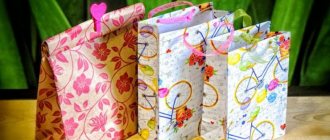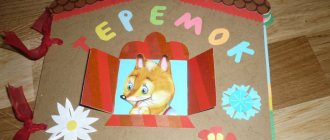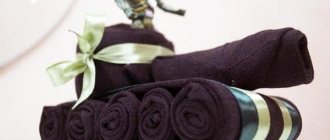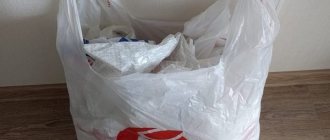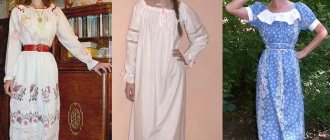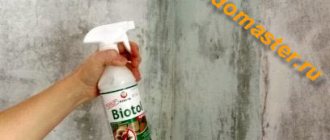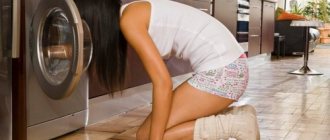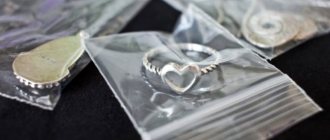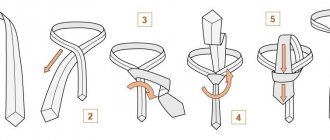Mold in the home is not a rare problem. mold in absolutely every home , even if you don’t see it or just don’t pay attention. It can upset you by appearing on the walls, ceiling and even furniture. Mold appears on vegetables and fruits that have been lying around for a long time. One way or another, you are constantly faced with mold in your home .
Surely you, just like us, are very interested in knowing what types of mold there are. What harm can this or that type of mold ? And of course, the most important question is how to get rid of mold in the house .
What is mold
Mold is a real living organism. This fungus feeds on wood, paper, plants, etc.
It all starts with one small spot, which, under favorable conditions, will grow. This is facilitated by room temperature (19-21 degrees) and high humidity.
The phenomenon has a characteristic unpleasant odor, which can be toxic.
Main reasons for education
- The materials used for construction have high residual moisture.
- Violation of waterproofing of interpanel seams.
- Poor waterproofing of foundations.
- Increased tightness of the room when installing plastic windows and safe doors in combination with insufficient natural ventilation.
- An imbalance in the heating of an apartment, expressed in uneven heating of rooms with high external humidity.
- Roofing defects, wall soaking due to slanting rains.
- Frequent washing, many house plants with insufficient ventilation.
Types of mold
- Black fungus is the most harmful fungus that lives in basements and bathrooms.
- Yellow – provokes exacerbation of respiratory diseases.
- White is less harmful. Settles on food and plants.
- Blue - appears only on wood. It does not pose a danger to people, but can attract other “brothers”.
- Green - just like yellow, lives on food.
How to get rid of mold on the walls in an apartment: home remedies
Chlorine-containing liquid bleaches .
They have a detrimental effect on spores and destroy molds of all kinds, but the use of these products is limited by their high aggressiveness and low degree of penetration into the materials being processed. A 10% solution of “Belizna” and other similar preparations can remove black deposits from ceramic, glass, enamel and concrete surfaces. The use of bleaches for antifungal treatment of drywall, plaster and wood is ineffective due to the high porosity of these materials. Table vinegar . Acetic acid solution is safe for humans, but is poisonous for most types of mold fungi, so this product can effectively remove mold from almost any surface.
Ammonia . The action of an aqueous solution of ammonia is similar to the action of chlorine-containing bleaches. Ammonia, just like Belizna, excellently removes mold from hard, low-porosity coatings and does not work well on loose or layered materials.
Baking soda . The safest, most affordable and easiest to use remedy for “live” mold, however, the use of sodium bicarbonate to destroy fungal spores does not give a noticeable result.
Borax . Sodium tetraborate is not only an excellent insecticide, but also an effective fungicide. A solution prepared from 1 cup of borax and 12 cups of hot water is used to treat contaminated surfaces, and mold no longer develops on them.
Causes of mold
It is important to know the causes of fungus in order to prevent this phenomenon:
- This problem is common with internal insulation, when the walls freeze.
- If your upstairs neighbors sin by forgetting to turn off the water on time, flooding you. Or there is a leak in the inter-apartment pipes.
- You don't ventilate the room well.
- There is a lot of water in the basement, and the mold has moved from there to you. In this case, you need to deal with the problem “from below”, otherwise it will bother you again and again.
- You like to close the curtains to block out the sunlight, or you live on the shady side.
- Your home is not heated enough during the off-season.
Store-bought mold repellents
- Titan Fungicide - makes it possible to remove fungus from painted walls without removing the paint coating.
- ATLAS MYKOS - suitable for all types of building materials and can be used for antifungal treatment of not only internal but also external walls of houses.
- Boramon - effectively removes mold from concrete, plaster, brickwork and painted wood materials.
- SAVO Anti-mold - packaged in a small bottle with a spray, and therefore especially convenient for use in hard-to-reach places. Effectively eliminates fungus that has settled in the seams between tiles and in the cracks of window frames.
- PS 50 – kills fungus that affects concrete, plasterboard and wooden structures.
- Mellerud against fungus and mold - acts very quickly and effectively, destroys all types of mold, has no odor, does not leave stains, ideal for treating painted or wallpapered walls.
Harm from mold
It is very important to remove mold in the apartment in a timely manner, as it penetrates the human body and provokes many diseases.
Read here What to do if a thermometer breaks: how to assemble a mercury thermometer and what to do if there is air pollution (110 photos)
The most common illness caused by fungi is allergies. The severity depends on the susceptibility of the body. Most often it affects children and the elderly.
What other diseases are caused by mold:
- Bronchial asthma.
- Skin rashes.
- Migraine.
- Gastrointestinal disorder.
- Pneumonia.
- Liver and kidney diseases.
- Respiratory diseases.
Methods of infection of the body: through food, air in the room and direct contact
Mold can penetrate the human body and cause various problems there in various ways:
- Air route. Mold spores are suspended in the air. They easily enter the human respiratory tract and then “travel” throughout the body. Moreover, spores are powerful allergens.
- Eating moldy foods. Of course, if there is mold in the product, this becomes immediately clear from the characteristic smell. However, some people are in no hurry to throw away such food, but simply remove the spoiled layer from the bread or cut off the green pulp from the fruit. This cannot be done, because the mold fibers go deep inside, although this is not visible from the outside. As a result, a person gets food poisoning, sometimes very severe (intoxication of the body occurs).
- Touching mold. When human skin comes into contact with mold, mycoses (a type of skin disease) can occur, this is especially likely if the immune system is reduced. Not only the upper layers of the epidermis are affected, but also the subcutaneous fat. Fungi can go further, causing diseases of muscles and bones, penetrating into internal organs.
Where does mold most often appear?
The fungus settles only where there are favorable conditions for this. The following rooms will be the “favorites” for mold:
Bathroom (bathroom) - this is where the air circulates worst, and its humidity is high.
Kitchen – when cooking and washing dishes, a lot of moisture is released, and the room is not always properly ventilated. Special attention should be paid to sponges for washing dishes, because they often do not dry completely.
Window frames - to be more precise, the slopes near them. In winter and autumn, when there are sharp temperature changes, moisture forms on the windows, which settles and turns into small black dots.
The most dangerous types of microorganisms
When living in an apartment or private house, you can encounter 3 types of microorganisms, namely: • Mold • Blue mold • Rot
Mold is found on materials made of stone, concrete or coated with paint. This type of fungus differs in appearance. They appear on the surface in spots or dots. Their coloring can be black, blue, green or brown. Mold can destroy any building material to the ground; it is enough to create suitable conditions for this.
Blue stain is dangerous for any building materials with a high density. Such fungi penetrate into the structure of the product, forming small channels behind them. Due to the increased humidity in the room, they easily “eat” their way into neighboring elements, and this affects the strength of the entire structure. Coniferous wood species, especially pine, are most susceptible to the effects of these microorganisms.
Of the building materials, only lumber can rot Rot can be: white, brown and bacterial. For wooden buildings, white microorganisms are the most dangerous. They are able to “eat through” a board 40 millimeters thick in just a month.
Brown rot creates cracks in the lumber, allowing moisture to penetrate more deeply. Once the integrity of a wooden element is damaged, its strength is significantly reduced, and the area around the crack darkens. As for bacterial rot, it affects the material from the inside.
White rot is the main enemy of all lumber. For this reason, more than one residential building was burned. At a time when there were no antiseptic solutions, houses with white rot were simply burned so that it would not spread to neighboring buildings.
You can also find wet and dry types of rot. The first forms black, brown or yellow stripes on the surface of the wood. Immediately after their appearance, cracking of lumber occurs. Dry rot turns wood brown and delaminates along or across the grain.
How to deal with mold
Before you start treating mold in your apartment, identify and eliminate its source. If you ignore this, the unpleasant “neighbor” will return to you again.
Today, stores offer a variety of mold repellents that can be used to treat an apartment. Their composition is, for the most part, identical, so choose the one that is more convenient for you to work with:
- Before work, be sure to read the instructions.
- Wear rubber gloves.
- Act quickly to avoid breathing harmful fumes for a long time.
- Be sure to ventilate the room after treatment.
In addition to purchased products, you can get rid of mold on the walls, in the bathtub, in the kitchen and other areas of the apartment using folk remedies:
- Rub the affected area with vinegar and leave it on for an hour. Afterwards, wash it off.
- The same can be done with hydrogen peroxide.
- You can treat stains with a weak solution of soda. Unlike previous products, it does not need to be washed off.
But these methods will be effective provided there is superficial infection with the fungus.
Types of mold in your home and how it is dangerous for your health
If you think that there is no mold in your house or apartment, then you are very mistaken. There is a lot of mold in absolutely every house or apartment. The only difference is that in one home there are no conditions for its growth, and in the other there is simply a resort for mold and it grows and rejoices, then you clearly see it.
What is mold? Let's start with what mold is. Mold is nothing more than a fungus. And as we all know, any fungus is spore-bearing. This means that from just one very tiny spore, which we simply cannot see without a microscope, a giant colony can develop, which is already visible even from afar.
What kind of mold is there? There are several types of mold. The most common mold is black mold, but you can also encounter pink, white and blue mold. Now we will look at each type of mold separately and find out why each type is harmful individually.
Black mold
Black mold is the most common; this fungus often appears on the walls of houses and apartments. Her appearance simply horrifies homeowners. Very often we may not see mold for a long time if it, for example, has formed behind a closet or under the carpet, but you will certainly smell it. When mold is already raging in your house and you smell dampness, at this moment you need to sound the alarm and immediately look for the source of the smell and the source of mold.
Black mold is called so because of its color; it has a black color, which is simply impossible not to see. This fungus has many strains and each strain is dangerous to our health in its own way. Each strain prefers certain surfaces for its growth. We will look at each one separately.
Black mold with white mycelium - it can appear on absolutely any surface. It has a white base and the ends of the fungi are black. This is a very dangerous mold for health. It causes the disease aspergillus, this disease affects not only people, but also domestic animals.
Phoma mold – has the fourth degree of pathogenicity. This mold, on the contrary, has a black mycelium covered with white spores. It is dangerous because it affects the respiratory tract.
Common black mold is the most common strain and the mold is completely black. It is this mold that is most often found in our homes. It appears at high humidity and dampness. Very often it is found in old non-residential buildings or in cold, damp apartments. She is very harmful to your health; if you have such a neighbor, you risk your health. Near such a neighborhood, intestinal disorders and respiratory tract diseases can begin. If you do not get rid of it, serious diseases of the digestive tract and respiratory tract can develop.
The second strain of common black mold does not differ in appearance from the previous strain. What makes it different is that it grows incredibly quickly. From a small point it can simply turn into a giant colony. When you see the speed of growth, you will be simply shocked. By postponing the fight against it for a couple of days, you can see how a spot of a couple of centimeters will turn into a huge spot of more than a meter. This is an almost harmless mold to health, but a huge pest for surfaces.
One of the strains of black mold is initially light in color and only as it grows it darkens and turns black. However, don’t worry, it won’t cause harm to your health and it won’t come into your home either. But the garages are her favorite “resort” with an all-inclusive function. This mold feeds on kerosene, diesel fuel and similar materials. The fungus is very tenacious and it is difficult to get rid of it, but you don’t have to sound the alarm if it lives in your garage, it does not cause any harm to your health.
Black mold is found on all food products. You can easily find it on vegetables or fruits in your refrigerator. The only way it will harm you is by ruining your products. If you find the slightest sign, immediately throw away the spoiled product, because it will spread quickly.
Medical black mold - this strain became the first antibiotic; it was invented from black mold.
Green mold
This mold is often confused with moss; it is very similar in appearance. The mold has a rich green color and the surface is not smooth. Its main habitat is organic matter (soil, manure, vegetables and fruits, clay wall surfaces).
It is dangerous because it very often affects your food products. It’s not uncommon for people to make a big mistake: when they see a small green spot on a fruit, vegetable or other product, they cut off the mold and think that the product can be consumed because the mold has been removed. This is strictly prohibited; even a small pocket of green mold instantly affects the entire product and penetrates through its pores into all tissues. By eating such a product, you risk getting quite severe food poisoning.
Pink mold
You won't find this type of mold on your walls or ceilings, or even under your bathtub. However, you can see it on foods that are rotting, such as vegetables and fruits. It can also affect cereals and various grain crops that are improperly stored.
This mold does not harm your health, but you should still not eat affected foods.
White mold
White mold Mukor as it is also called , does not form on walls and other surfaces in your home. It grows on trees and on the soil surface. You can find this mold in flower pots in your home. This usually happens when the soil does not have time to dry out.
This mold rarely causes harm to health, but in rare cases it can affect the internal organs of both people and animals. Infection occurs by entering the circulatory system. It can enter the circulatory system through damaged skin; this can happen if you touch the mold while having a cut or deep scratch. The consequences of infection are quite severe. Therefore, do not touch it if you have any skin lesions.
Blue mold
This type of mold has a blue or bluish color, which is why it got its name. You won't find one like this in your home. It grows exclusively on trees. It is this mold that is specially contaminated in cheeses for the production of very expensive varieties of blue cheese. This mold is completely harmless to your health.
Gray mold
Gray mold has the same gray color; it is a frequent guest in houses and apartments. This mold grows well on absolutely any surface and feels wonderful. It can be on walls, furniture and even food. Such mold settles very tightly in the home and it is very difficult to remove this mold.
Gray mold is quite harmful to your health; it affects the respiratory tract.
Prevention
To never encounter mold again, take preventive measures:
All about orthopedic mattresses with spring support- DIY air freshener: step-by-step description of how to make a natural, effective air freshener (105 photos)
Ceramic air humidifier with battery - types, features of selection and application (90 photos)
- Regular ventilation.
- Systematic cleaning of rooms where humidity levels are high.
- Dry towels, washcloths and other cloths.
- Make sure that the plumbing does not leak.
- Do not let wet things sit for a long time; hang them up immediately.
- Pay attention to the trash can: wash and clean it in a timely manner.
The struggle must be comprehensive to achieve the desired result. In the photo you can see the consequences of mold in an apartment. It harms not only people, but also their property.
How to treat clothes, books and furniture against fungus
Often, mold also affects clothing, for example, if it has been stored for a long time in an unventilated room or a closet that has not been opened for a long time.
You can first try to revive such a thing using folk remedies. There are many options here: soda, boric acid, hydrogen peroxide, fermented milk products, lemon juice in combination with salt, table vinegar, ammonia, turpentine, etc. You can try different methods until the desired result is achieved.
Folk remedies can help remove mold from fabric
If the fungus has already become deeply ingrained, then household chemicals that contain chlorine (again, Belizna, Domestos) will come to the rescue. However, you need to remember that for some fabrics such products are unacceptable (for example, for wool it is better to use Vanish).
Mold can also affect books. You can try to get rid of it. The spots are moistened with a solution of 2–3% formaldehyde, and the remaining pigmentation is bleached with hydrogen peroxide.
Mold on a book can be removed with a formaldehyde solution, and then the stains can be bleached with hydrogen peroxide
Before processing, you should place a regular sheet of white paper under the book page. You should wear rubber gloves when working with formaldehyde to protect your skin.
Video: removing mold from a book
Another way to remove mold from books is to rub the stains with boric acid and then dry the pages with an iron.
As for furniture, you need to understand that it is almost impossible to remove mold spores from upholstered furniture. If the upholstery can be washed and treated with antifungal agents, then the batting and foam rubber in the depths of the structure cannot be disinfected in any way. Unless, of course, you are ready to completely remove the upholstery and disassemble the structure, treat the wooden frame, fillers and upholstery separately, and then reassemble it from scratch.
How you can fight mold on textiles and shoes
- Repeated treatment with chlorhexidine,
- hydrogen peroxide,
- Miramistin,
- antifungal sprays such as Miko-stop.
- iron,
How to clean a moldy baby stroller
If mold has formed on a baby stroller during storage, of course, it is better to dispose of it or wash it well and use it only for an older baby, and not for a newborn.
Procedure:
- We remove the inner mattress and sides of the cradle, and the cover-cover. We wash them at the highest possible temperature according to the product passport or replace them with new ones (you can sew them yourself). When washing, add an oxygen stain remover such as Vanisha. After washing, dry and, if possible, steam, being especially careful in the seam area.
- We remove from the frame all the upholstery that can be removed. If it is secured with self-tapping screws or self-tapping screws, unscrew it. If it is possible to remove the bottom of the cradle, take it out. The fabric is usually synthetic, afraid of chlorine, but not afraid of oxygen agents and short steaming treatment. Soak for an hour, wash thoroughly, dry, and gently steam.
- We wash and treat the bottom of the cradle. Let's dry it.
- We wash the stroller chassis, dry it, and go through it with a steam cleaner.
- When everything is dry, we assemble the stroller.
Features of reproduction
Reproduction of mold fungi can occur in three ways:
- asexual (using spores);
- vegetative (using separated parts of the mycelium);
- sexual.
Most species, depending on conditions, can reproduce by any of them, but not all methods are available to certain types of fungi.
If mold is in favorable conditions with sufficient nutrients and high levels of humidity, spore reproduction occurs. They develop in special storage sporangia. When the spores mature, the shell bursts. The spores are carried through the air and, once in suitable conditions, begin to actively reproduce.
It is possible that the disputes have been in an unfavorable environment for a long time. They do not develop, but remain viable. As soon as conditions change, spores immediately germinate.
In the case of vegetative propagation of a mold fungus, small parts are separated from the mycelium, which can exist independently. The development of a new colony begins with them.
Sexual reproduction occurs when the hyphae of one or different myceliums come into contact, resulting in the sex cells uniting to form a zygote. After the cell has fully matured, embryonic mycelium appears from it, which will give rise to a new full-fledged mycelium.
Disadvantages of DIY mold removal
- A person who does not have experience in such work is deprived of the necessary knowledge. Namely, disinsection requires strict adherence to safety precautions, as well as the correct choice of means. When choosing it, an inexperienced person is forced to rely only on commercial advertising or advice from outsiders. But you should understand that neither the first nor the second source of information takes into account your real situation with its features.
- When choosing a means of destruction, a person can turn to traditional methods or to specialized preparations from a hardware store. There are really good drugs in both groups of drugs. However, each also has disadvantages.
If we talk about folk remedies, then, as a rule, the effect produced is temporary. It is very rare to achieve complete elimination of fungal spores.
As for purchased drugs, you will have to choose between saving time and saving health. The fact is that all such remedies are divided into instant-acting and prolonged-acting ones. The former mainly include potent drugs. If you choose such a spray, you will have to evacuate the family from their apartment for several days - until the toxic fumes completely disappear from the premises. Needless to say, not everyone has such an opportunity.
If you resort to long-acting agents, you will need a lot of luck. It is difficult to predict which remedy will be suitable for your situation.
Stages of work of a professional disinfector
Let's look at the stages of professional disinfection of a room against mold:
1) Preparing the room for processing.
At this stage, apartment owners must responsibly approach the instructions received from the sanitary service operator. It is necessary to perform a number of simple manipulations to ensure that the processing is safe and effective:
- A very important condition is preliminary wet cleaning: it is necessary to wash the floor and wipe off dust from all accessible surfaces, using the usual detergent. This measure is necessary because the disinfectant must create a thin film on all accessible surfaces; a layer of dust will prevent this.
- All personal hygiene products, dishes and food must be packed in bags and stored in a closet. This also applies to pet bowls and food.
- If there is an aquarium in the apartment, you need to turn off the air supply and tightly close the aquarium with a lid during processing.
2) Assessment of the condition of the apartment/house.
The master arrives at your address at the appointed time. Please note that we take client confidentiality seriously, so the specialist arrives in ordinary clothes, without attracting the attention of neighbors. On site, the master assesses the sanitary condition of the apartment. Only a real assessment can allow the master to determine the technique and choose the means. All preliminary data are conditional.
So, the master determines all places of infection. If necessary, a thermal imager is used.
3) Preparation of the drug.
Depending on the degree of infection and other features, the specialist selects the product, determines its dosage and concentration. All drugs used belong only to class 4 low-hazard substances, that is, they do not harm residents and pets.
4) Treatment of the apartment.
Disinfection treatment is usually carried out using a fog generator. It happens like this: the master calculates the dosage of the product and fills it into a device, which heats the product to room temperature and sprays it throughout the apartment, breaking it down into tiny particles. This makes it possible to achieve high penetrating power: the most inaccessible places and even crevices are treated. As a result, a thin film of disinfectant is formed on all surfaces, which has a long-term effect.
5) After the treatment is carried out, it is necessary to let the drug “infuse” for 1 hour. After this period, it is necessary to thoroughly ventilate the apartment by opening the windows wide. Ventilation must be carried out for 2-3 hours. Then you should wipe the floor with a damp cloth (10-15 centimeters away from the baseboards) and all work surfaces.
After this, the family can return back. If you follow all the instructions, staying at home will be completely safe.
6) Guarantees and recommendations.
An important point is that sanitary services provide a guarantee for their work. Depending on the type and quantity of services, the warranty period is established. During this period, the client has the right to take advantage of one free visit by a specialist if the first treatment did not produce the desired results.
The specialist also gives recommendations for further prevention of recurrence of the problem.
